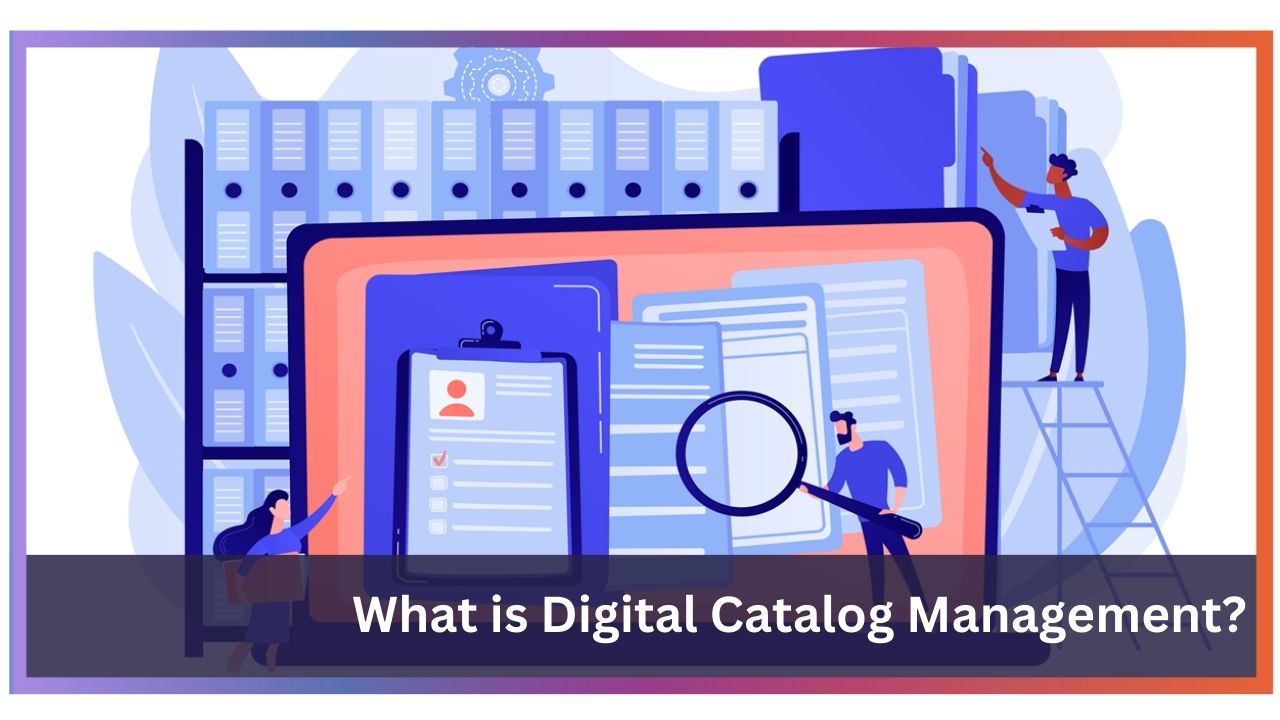What is Digital Catalog Management? and How it Works
Posted On: Dec 29, 2023
Indeed, the boom of digitalization is one of the pandemic’s profound effects. Every Industry has witnessed its benefits, such as a centralized platform for all kinds of information, a paperless approach, accessibility from anywhere, and many others.
Digital cataloging is one such practice that has been adopted by many industries apart from the obvious e-commerce including manufacturing, Retail, Restaurants, etc. Well, a catalog is a systematic arrangement of products or services that happens to arrange the information orderly, often with descriptions so that the items can be found easily. But the immediate benefit it delivered is an enhanced business approach which brings more visibility with fewer trust issues.
What is a digital catalog?
A digital catalog is the digitalization of a printed catalog, an online showcase of all products or services you sell. It contains every product or service you have in your inventory with a complete description. Either a picture of the products or a video of the services, a digital catalog provides the option to give a real-time update that can include detailed product or service information, specifications, prices, usage, etc, to its users or customers.
The digital catalog is powered by robust search technology, enabling highly effective and accurate searches, filtering, and sorting of products and services.
What are the advantages of a digital catalog?
Digital cataloging has been widely used by the e-commerce industry. But other than there are other Businesses and Industries that are adopting this to make it a digital-friendly business strategy. Digital catalog system helps businesses organize product information, features, and details in a centralized and easily accessible format by its users and customers
Some of the key advantages of a digital catalog are:
- Easy accessibility which helps in better reach ensuring consistency and accuracy of product information across the organization and other stakeholders. Better visibility of product range in a visually appealing and user-friendly manner by vendors. This helps users with clear visibility while ordering. More customized approach to sales
- It can save time, energy, and money for both Companies and vendors. It is easy to switch to various innovative and interactive product marketing ideas as per season, trends, or companies’ requirements.
What is Digital Catalog Management?
Digital catalog management is a process of creating, organizing or categorizing products, updating information on new or additional products of all the products and services it offers, and making it available for the user. It uses technology and software tools to streamline the creation and maintenance of catalogs over digital platforms. The process also includes managing the inventory level across various sales channels.
Key Drivers of a Good Digital Catalog:
Real-Time Update: Managing all the assets on the digital platform needs a complete and frequent update, such as if there are any changes in price, feature, or launch of any new product to keep the buyers updated.
Tagging and categorizing: This helps the products define a hierarchical structure and creates a user-friendly platform.
A Good product description: An apparent product description with good images, diagrams, videos and other visual assets can help companies understand what they’re purchasing and create faith in the suppliers.
Upsell: Mapping add-ons, upsells, and cross-sells play a vital role in the digital catalog management process to boost revenue by a good percentage.
What is the role of a digital catalog in a Vendor Management System?
A vendor management system is a centralized platform for the end-to-end procurement process, which includes identifying the need for any product or service, sourcing, acquiring, selecting vendors, and paying for goods or services.
A good vendor management system presents a platform for internal communication between companies and vendors.
A digital catalog feature in a vendor management system would allow vendors to display their products and details to the users while the company gets to have visibility of products available and prospective vendors at the time of placing purchase orders.
Through digital cataloging, vendors could add their catalog to the system and accept queries and valid orders from a company. Also, companies can get a real-time inventory update as vendors change the quantity as per their available stock.
How does Partner Portal help in digital catalog management?
Partner Portal is a cloud-based vendor management system. The digital cataloging feature in the Partner Portal creates a marketplace for companies and their vendors to sell and buy required products. Vendors get an opportunity to sell their products to a particular company and offer a real-time inventory update. It builds a reliable relationship between the vendor and the company.
Partner Portal enables vendors to add new products either individually or in bulk upload by uploading a CSV file. The company gets visibility in terms of product as well as inventory at the vendor ends. The transparency and clear visibility of inventory enhance the user experience, improve efficiency in updating information, and increase the overall effectiveness of procurement.
The process simplifies ordering, reduces order entry errors, and eliminates inaccurate pricing from purchase orders and invoices. Partner Portal analyzes product names and descriptions to optimize for search, so the items pop to the top. Ultimately, it delivers a win-win situation for vendors and companies. Partner Portal simplifies procure-to-pay processes and optimizes collaboration with its dynamic dashboard. It is a centralized and automated platform for all industry sizes with various features such as easy vendor onboarding, digital catalog management, three-way matching, etc.
